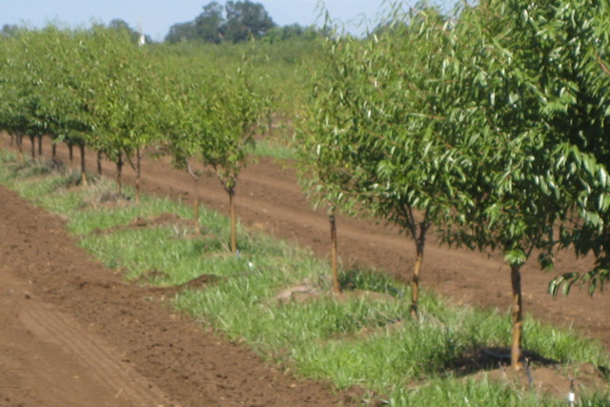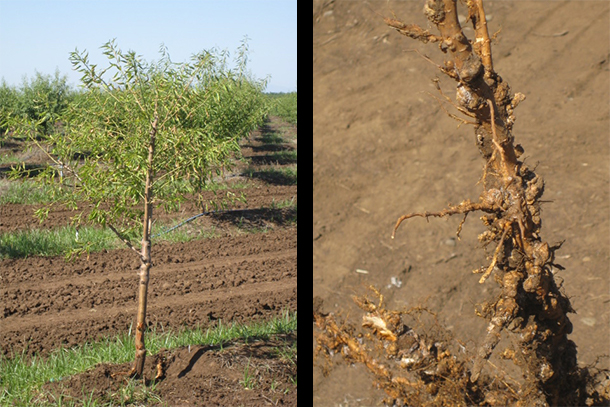Nematode suppression in almond orchards can be tricky. Multiple variables need to be factored into a grower’s equation on how to successfully limit the pest. Dr. Andreas Westphal, UC Riverside Professor of Cooperative Extension Nematology, and his team at the Kearney Agricultural Research & Extension Center aim to help producers manage plant-parasitic nematodes in a way that is right for their soil type and environmental conditions.
“In plant-parasitic nematodes, general symptoms that warrant further diagnostic efforts are excessive wilting during high ET events despite sufficient soil water availability, lack of tree vigor, and uneven growth throughout the orchard, among others,” Westphal said while noting that local conditions need to be considered.
Soil variability
Nematodes thrive in many different soils; some species flourish and cause more damage in sandy soils. California’s climate is very conducive for the development of damaging population densities of these soil-dwelling parasites. In an orchard with many different types of soil, growers may see stressed trees in the sandy areas and assume that’s water stress. Westphal noted that growers may have a nematode issue without realizing it. “Root-knot nematodes and ring nematodes are species that do show a preference for sandy soils,” he said. “If these species are introduced in a field with variable soil texture composition, they are likely to strive for largely damaging population densities in the sandier areas of the field compared to those of heavy ground.” Soil type needs to be considered when diagnosing stressed trees in an orchard.


